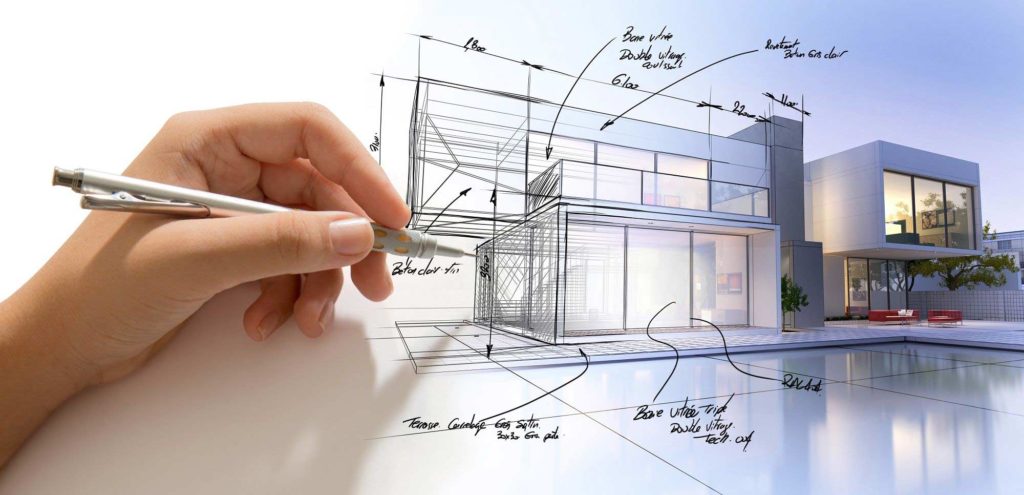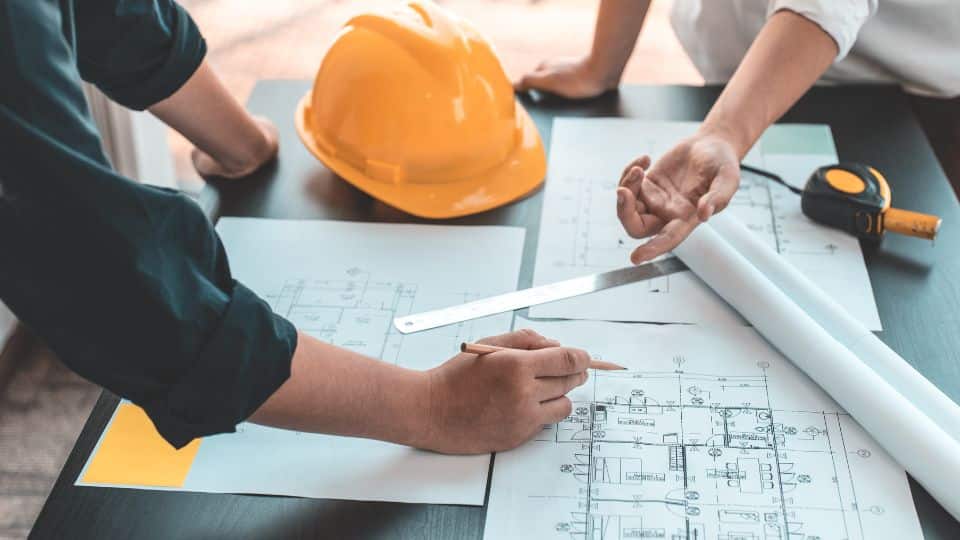Comprehending the Diverse Job Paths Available for Aspiring Architect
As an ambitious Architect, you have a world of occupation courses waiting for you. Whether you're drawn to conventional design or the subtleties of sustainable style, there's a specific niche that lines up with your passions.
Conventional Design: Designing Buildings and Structures
Conventional design concentrates on making buildings and structures that blend functionality with aesthetic charm. As you explore this area, you'll value the complex equilibrium in between kind and objective. You'll learn to draw inspiration from historical styles, incorporating elements like symmetry, materials, and craftsmanship. Your styles can show cultural heritage, showcasing regional customs while satisfying contemporary requirements.
You'll create abilities in preparing, model-making, and site analysis, allowing you to envision and connect your concepts successfully. Engaging with clients, you'll require to comprehend their vision and equate it into viable layouts.
Moreover, building codes and sustainability practices are essential in your job, guaranteeing your frameworks are environmentally pleasant and risk-free. As you grow in your job, you'll discover opportunities in residential, business, or even restoration tasks, each offering special challenges. Welcoming standard architecture leads the way for a meeting profession that admires the past while shaping the future.
Urban Preparation: Shaping Communities and Public Spaces
As a hopeful Architect, you can play a crucial function as a city coordinator, changing how communities connect and work. By using community involvement strategies, you'll ensure that residents have a voice fit their setting. Plus, incorporating lasting design concepts will assist develop spaces that not only fulfill today's needs however additionally protect the future.
Function of Urban Planners
While many could assume of engineers as the sole enthusiasts behind buildings, urban planners play an important duty in forming the wider landscape of neighborhoods and public spaces. By collaborating with numerous stakeholders, you'll aid create parks, transport systems, and property areas that advertise social communication and availability. Your competence in spatial style and community characteristics enables you to envision future development while protecting cultural heritage.
Area Involvement Techniques
Reliable area involvement methods are vital for city organizers to guarantee that the voices of locals are listened to and valued in the preparation procedure. To foster purposeful discussion, you need to prioritize open online forums and workshops where community participants can reveal their concepts and concerns. By proactively paying attention and incorporating responses, you'll create areas that reflect the area's requirements, inevitably leading to even more successful and sustainable metropolitan settings.
Lasting Style Concepts
When creating metropolitan rooms, incorporating lasting design principles is critical for creating environments that prosper both ecologically and socially. Think about integrating environment-friendly spaces, like yards and parks, to boost biodiversity and boost air quality.
Designing with water preservation in mind is additionally vital-- think of rainfall gardens and absorptive surface areas to take care of stormwater. Involving community members during the preparation procedure warranties that the spaces you produce meet their needs and encourage social communication. By accepting these concepts, you'll add to vivid, sustainable urban landscapes that benefit everyone.

Landscape Design: Developing Sustainable Outside Environments
As you discover landscape design, you'll uncover essential design concepts that develop useful and gorgeous outdoor areas. Lasting practices play an important role in ensuring these environments flourish while reducing ecological effect. And also, you'll discover a range of career opportunities that enable you to make a genuine distinction in exactly how people communicate with nature.
Style Principles in Landscape
Recognizing layout principles in landscape style is essential for producing lasting outdoor environments that harmonize with nature. You'll need to contemplate components like equilibrium, proportion, and scale to guarantee your designs really feel natural and welcoming. Furthermore, pay interest to seasonal modifications, developing with materials that complement the environments year-round.
Lasting Practices Introduction
Lasting practices in landscape architecture not just concentrate on appearances but likewise focus on eco-friendly health and resource conservation. You can create rooms that promote soil health and wellness, such as making use of natural materials and practicing permaculture concepts. Inevitably, these techniques guarantee your designs benefit both people and the atmosphere for years to come.
Occupation Opportunities Expedition
With a solid structure in lasting techniques, landscape style offers a variety of profession paths that allow you to make a significant influence on the atmosphere. You might function as a landscape developer, developing aesthetically pleasing and practical outside areas, or focus on environmental repair, assisting to restore damaged communities. Urban coordinators typically work together with landscape designers to produce eco-friendly areas in urban settings, boosting city livability. If you're enthusiastic regarding education, consider becoming a landscape style instructor, inspiring future generations. Additionally, you could function with nonprofits concentrated on environmental sustainability or involve in study to innovate new techniques. Each path not only shapes gorgeous settings yet likewise fosters a much healthier world for future generations.
Sustainable Style: Concentrating On Eco-Friendly Practices
As you explore your career in design, welcoming green practices can establish you apart in a competitive field. Lasting design focuses on developing buildings that lessen ecological impact while improving owner health. By including eco-friendly materials, energy-efficient systems, and lasting building methods, you'll add to a greener future.
Start by getting expertise of green qualifications like LEED or BREEAM, which can bolster your credentials. Think about just how all-natural light, ventilation, and thermal efficiency can enhance layout. Team up with engineers and environmental specialists to introduce remedies that lower waste and conserve resources.
Don't fail to remember the value of area participation-- engaging local stakeholders can inspire styles that balance with the atmosphere. As customers increasingly focus on sustainability, your competence in green techniques will certainly not just bring in tasks yet additionally accomplish your interest for liable style. Accept this vital facet of the occupation, and enjoy your occupation thrive.
Historic Preservation: Protecting and Restoring Social Heritage
While you start on your building journey, consider the important role of historical conservation in preserving our cultural heritage. This field concentrates on the defense and repair of considerable buildings, websites, and frameworks that tell the tales of our past. By involving in historic preservation, you'll aid secure the architectural heritage that forms neighborhood identity.
As a historic conservation Architect, you'll assess historical relevance and evaluate the problem of frameworks. You'll function closely with historians and conservationists to assure authentic restoration strategies are employed. This occupation path enables you to blend imagination with research, enabling you to make services that additional resources value original products and workmanship.
Your work not just adds to sustainability by reusing existing structures but likewise cultivates a sense of pride within communities. Accepting this course will certainly help you end up being a guardian of history, protecting the tales and appearances that enrich our lives.
Interior Style: Enhancing Indoor Spaces
Historical preservation and interior design both share a dedication to enhancing the built atmosphere, yet they focus on different elements. While historical my site conservation emphasizes maintaining a structure's historic and social value, interior architecture nos in on enhancing interior rooms for functionality and looks.
As an ambitious Architect, you'll locate that indoor architecture allows you to blend creativity with technical skills. You'll develop areas that not only look great however likewise promote comfort and effectiveness. This field includes comprehending exactly how light, color, and materials communicate within a space, affecting mood and functionality.
You'll service various projects, from domestic homes to commercial workplaces, guaranteeing that each setting fulfills the demands of its owners. By focusing on individual experience, you can transform interiors into motivating and useful areas, making a considerable influence on how individuals connect with their environments. Accept the chance to enhance interior settings and shape the way people function and live.
Industrial Design: Combining Performance With Appearances
Commercial design plays an essential duty in producing products that seamlessly mix looks with performance, ensuring that what you make use of everyday is not only aesthetically appealing yet likewise practical. As an ambitious Architect, you can engage yourself in this field, focusing on creating everything from furnishings to consumer electronic devices. Your work entails comprehending customer requirements, products, and producing procedures, allowing you to develop innovative remedies that improve day-to-day experiences.
In industrial layout, you'll frequently team up with designers, manufacturers, and marketing experts, guaranteeing that your designs are not just attractive but also feasible. You'll find out to stabilize form and function, prioritizing functionality without giving up design. By honing your skills in laying out, 3D modeling, and prototyping, you'll be fully equipped to bring your concepts to life. This occupation course supplies a dynamic environment where creativity satisfies functionality, you could look here making it a satisfying selection for engineers curious about forming the items of tomorrow.
Frequently Asked Inquiries
What Educational Certifications Do I Need to Become an Engineer?
To end up being an architect, you'll require a professional level in design, generally a Bachelor's or Master's. In addition, you'll have to complete a teaching fellowship and pass the Architect Enrollment Examination to exercise legally.
Exist Certification Needs for Different Building Occupation Paths?
Yes, there're certification needs for various building paths. Architect. You'll require to pass exams, full internships, and occasionally go after specialized training, depending on your picked emphasis, like landscape architecture, city style, or historical preservation
What Software Program Skills Are Crucial for Designers Today?

How Can I Gain Practical Experience While Examining Style?
You can obtain useful experience by interning at architectural companies, taking part in layout competitors, volunteering for neighborhood projects, or collaborating with classmates on real-world jobs. These opportunities improve your abilities and develop valuable connections in the industry.
What Job Opportunities Exist Outdoors Typical Design Firms?
You can check out various work chances outside standard style firms, like urban planning, interior decoration, landscape design, construction administration, property advancement, or perhaps functions in sustainability consulting. Each deals special obstacles and benefits.
Whether you're drawn to typical architecture or the nuances of lasting design, there's a particular niche that aligns with your passions.When developing city spaces, incorporating sustainable style principles is important for creating atmospheres that grow both environmentally and socially.As you check out landscape style, you'll uncover important style principles that produce functional and lovely outside spaces.Understanding style concepts in landscape architecture is essential for creating lasting exterior atmospheres that harmonize with nature.In industrial style, you'll frequently team up with marketing professionals, engineers, and producers, making sure that your layouts are not just lovely however also possible.